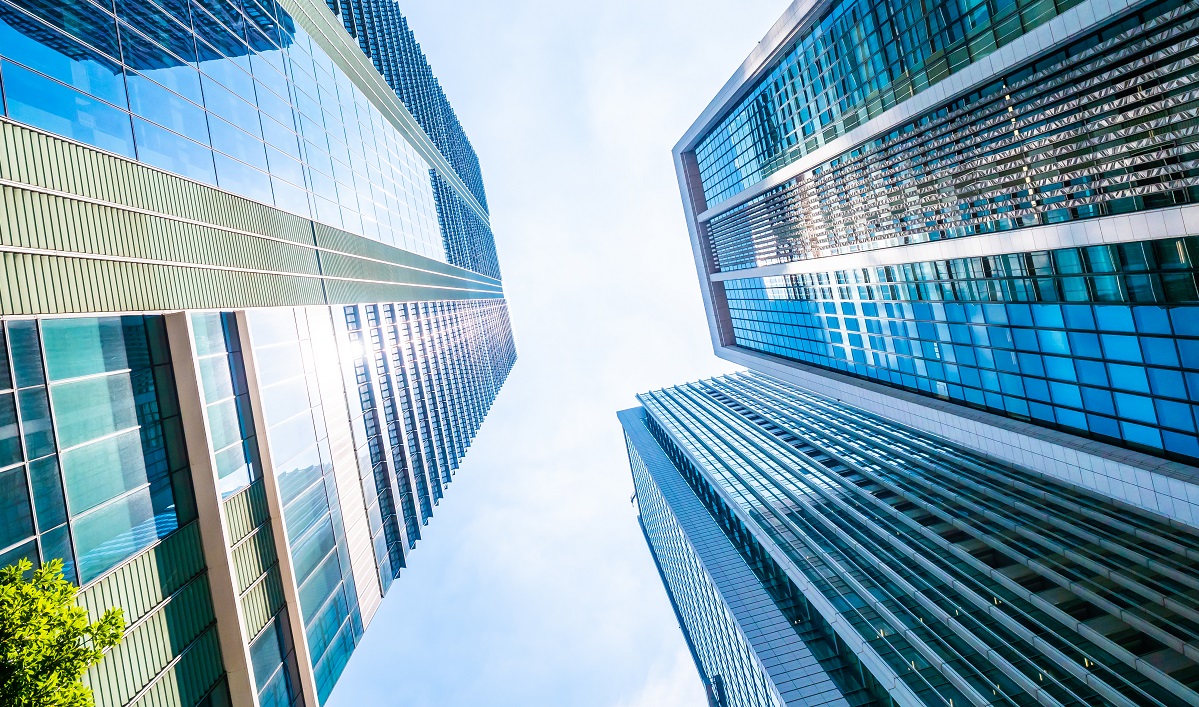The climate in cities in comparison to rural areas is different in terms of temperature, radiation and aerodynamics, among others. A distinctive element of the topoclimate of a large agglomeration is the occurrence of a unique climate phenomenon – urban heat islands.
What is an urban heat island?
The very word “island” refers to the image of concentric isotherms, of which values decrease towards the outskirts of a city. Drawn on a city plan, they make a similar shape to an island surrounded by a “sea” of cooler suburbs. The warmest are usually city centers which are tightly built up, as well as areas of large industrial plants.
Urban heat islands are one of the most characteristic microclimatic phenomena which occur in metropolitan areas, where the lack of active biological surfaces responsible for stabilising the heat balance is replaced by dense and tall buildings. Its occurrence is determined by analyzing the thermal convection in the city in relation to the surrounding non-urban areas.
The basic parameters which define urban heat islands are intensity, horizontal and vertical range, and structure. High intensity islands are most common in summer, when temperature differences between the city and suburbs are the biggest. The horizontal range, on the other hand, depends on the buildings. Likewise, the height of the building can range up to several hundred meters depending on the size of the city and the industrial area. As for the structure of the heat island, it resembles a mosaic with distinct heat centers separated by an area of cooler air. Urban heat islands are identified by measuring the air or surface temperature differences.
Thermal energy and its influence on the climate
The negative effects of heat islands are felt by inhabitants of large agglomerations around the world, such as New York, Montreal, Tokyo and Los Angeles. It is in large cities that the heat stress associated with heat waves, smog or power outages are most severely felt.
The appearance of the islands is influenced by building materials that store more sunlight than they reflect, among others. This is due to the low albedo of dark roofs, concrete and asphalt. On summer days, the temperature of a building’s surface can rise up to 30°C higher than in buildings on the outskirts, and black metal roofs can reach up to 85°C. Temperature differences in agglomerations and beyond are also felt in the air. During the day, temperatures can be up to 3°C higher, and up to 12°C at night.
But the strength of an urban heat island isn’t influenced only by the material from which buildings are built. The geometry of buildings also plays an important role, which unfortunately, more often than not, favors the formation of so-called urban canyons. The higher and more densely arranged the buildings are, the less it is possible to reflect energy, as a large portion of it is reabsorbed by streets and facades. In addition, the size of the city and its geographical location also affect the intensity of heat islands. For example, if the city is located in a valley, the air flow is obscured, and ventilation is what minimizes the risk of accumulating heat reserves the most.
Anthropogenic factors are also important. The energy produced from using air conditioning or heating causes heat accumulation, an increase in perceived temperature outside, and an increase in operating costs. Increasing levels of artificial heat also have a negative effect on the climate, for example, through emission of hazardous pollutants and an increasing radiation level. Leaky air-conditioning networks are a good example, as they can leak f-gases or carbon dioxide, in other words – greenhouse gases. In AC installations, they act as a refrigerant, a substance that transports heat. Dust and greenhouse gases are released by burning coal, which power plants use to cool down cities in summer. In addition, they emit more sulfur dioxide and nitrogen oxides, which cause smog, which is particularly harmful to people suffering from respiratory diseases, senior citizens and children.
How can we counteract urban heat islands? COOL-R roofs
The job of modern construction is to protect the environment and improve the quality of life of future residents, and thus to eliminate the effects of phenomena such as urban heat islands. In context of the technical conditions of existing buildings and limited development areas, one of the most important challenges is the management of current and emerging infrastructure.
The highest points of urban areas – roofs – seem like a good place to start. Their surfaces should possess high reflection and emission properties so they will be able to prevent overheating and effectively reflect absorbed heat. COOL-R, that is a highly reflective and waterproof liquid roof coating, is a solution that combines both of these factors. It minimizes the possibility of high temperature differences from happening. The surface of a COOL-R roof heats up only 3–5°C higher than the ambient temperature. In addition, the results of the ASTM E1980-11 “Standard Practice for Calculating Solar Reflectance Index of Horizontal and Low-Sloped Opaque Surfaces” confirm that it reflects approx. 86% of sunlight, and its emissivity value is 0.85 ± 0.03, which means the material is able to reflect the heat emission in the form of infrared radiation. This way, buildings are also protected against overheating, as heat is not transmitted inside. Therefore, the costs which usually follow the more intensive use of coolers, are reduced. This in turn leads to less greenhouse gas and dust emissions.

Comparing a COOL-R roof with other types of surfaces: properties + temperature differences; Source: Catalog
Unfortunately, cool surfaces can’t completely solve the problem of heat islands. Large agglomerations require a reconstruction of green areas. Green roofs, vertical gardens and parks cool down the surface and prevent it from heating up. Ultimately, however, counteracting urban heat islands isn’t the most difficult challenge which urban planners face, as both cool and green roofs are a solution that can be implemented during a renovation of a building.













